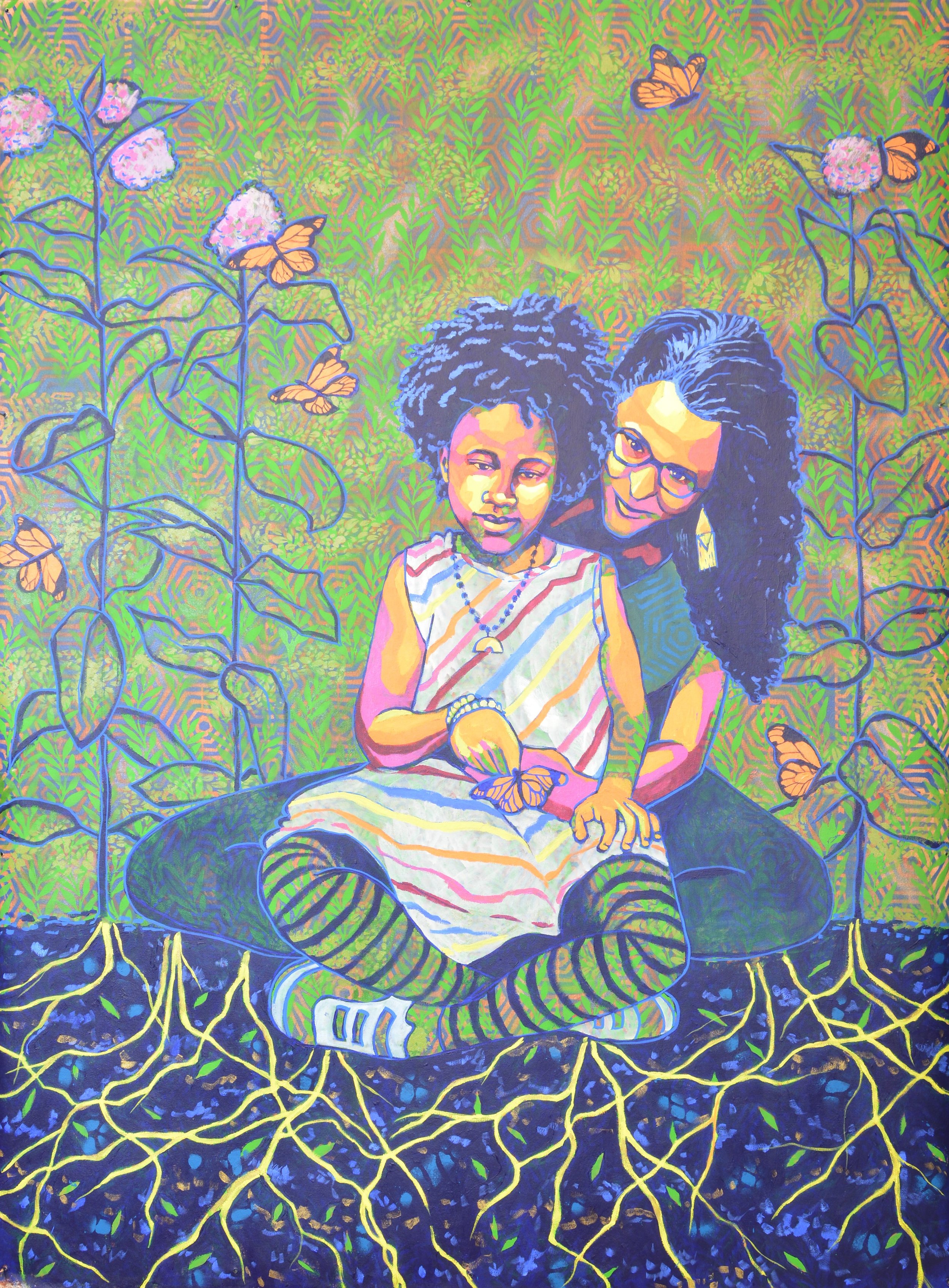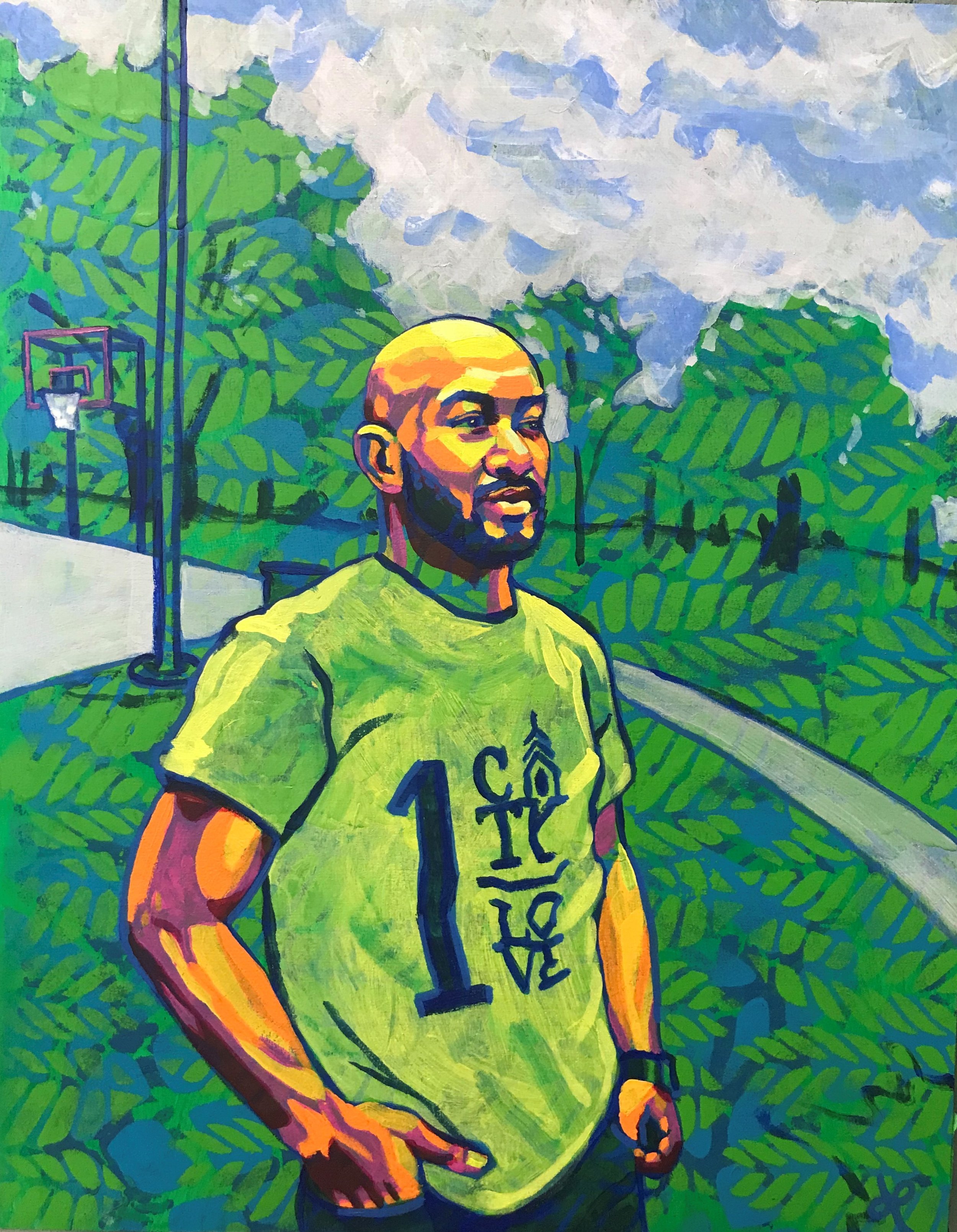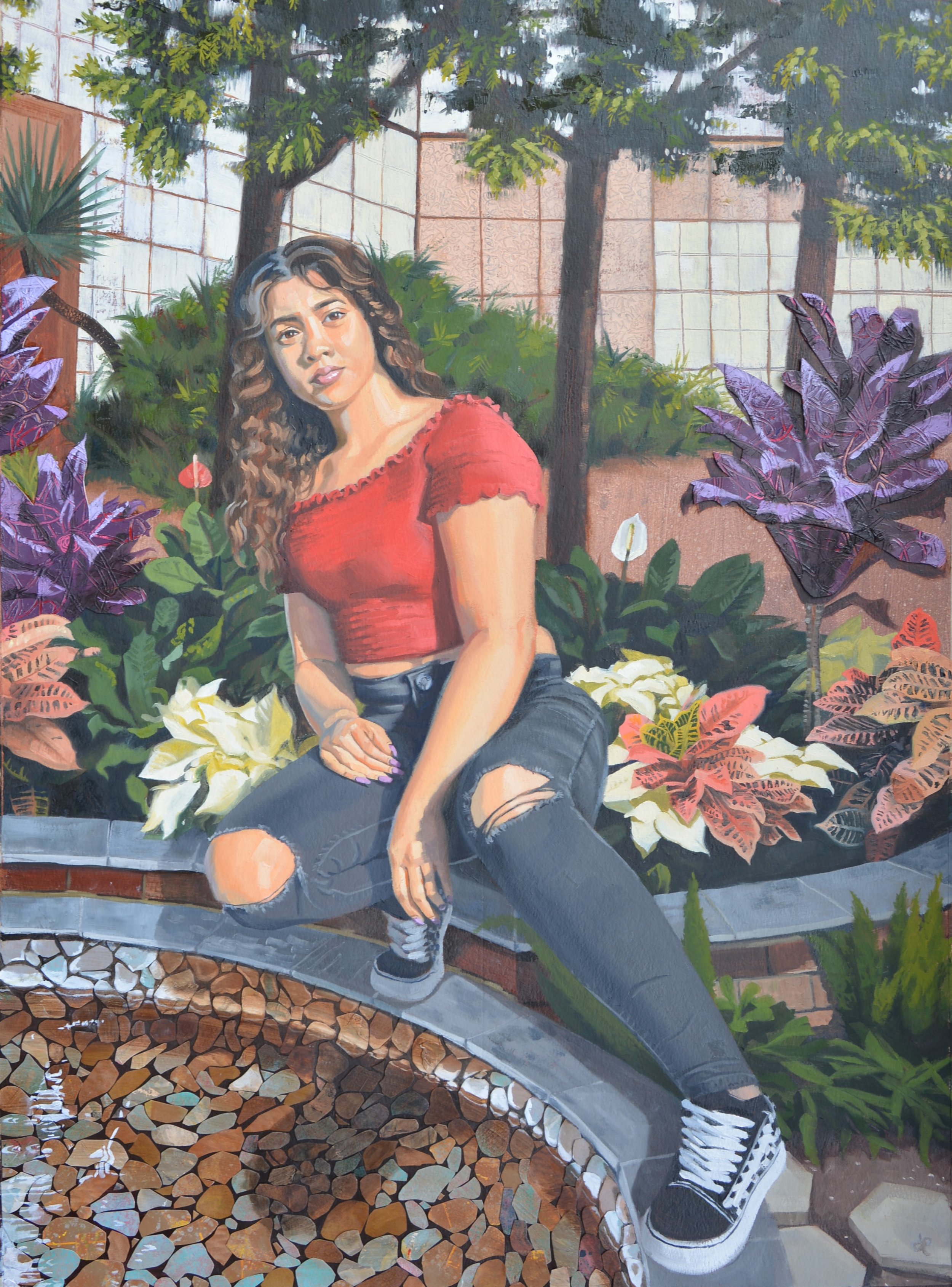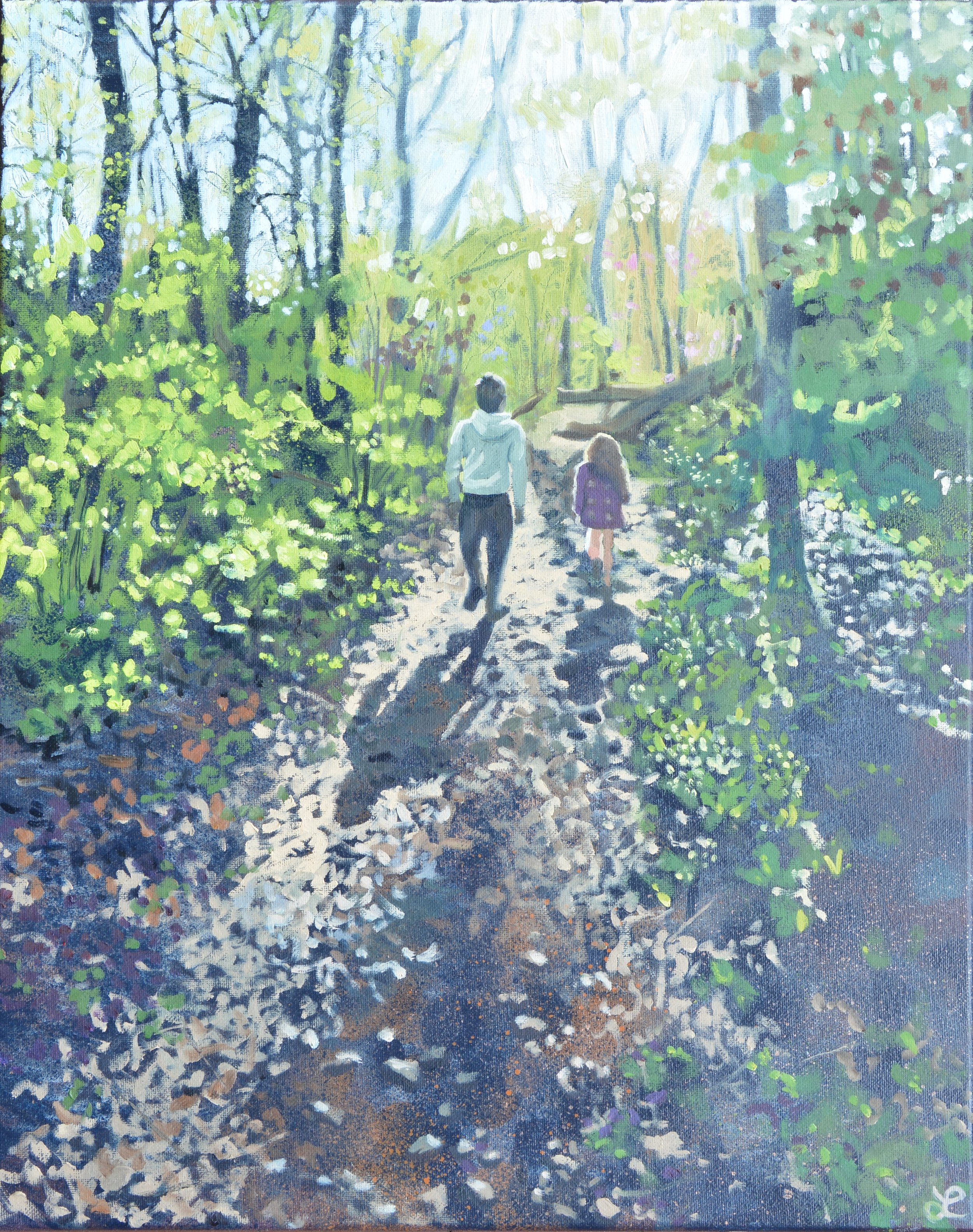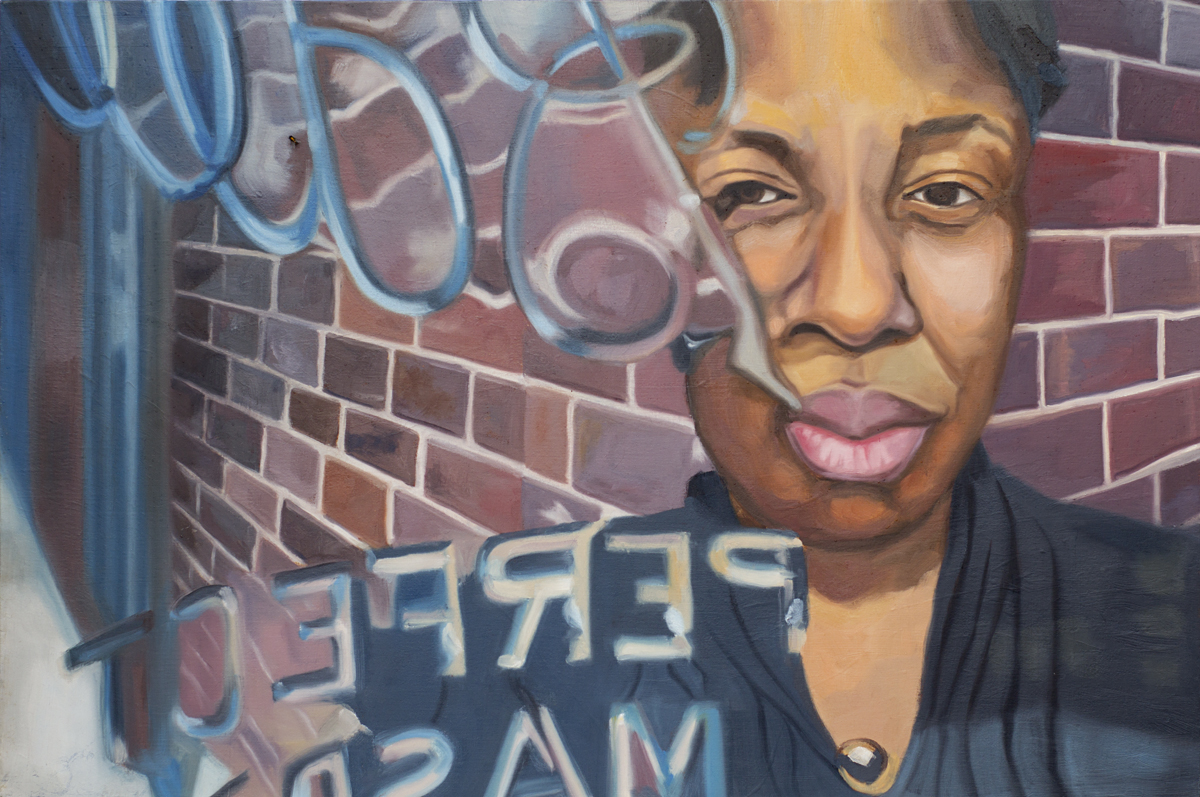Click an image below to expand
Concepts Behind the Art
Here I share a little more about my ideas behind a few of my painting series:
-
I recently learned about the mycorrhizal network. In a forest, trees look like individuals, whether they thrive or struggle is on them. But the reality of forests is actually quite different. Fungi form underground mycorrhizal networks where they connect the roots of trees and plant into a deeply rooted community. Trees actually share food and water and even communicate with each other. There’s so much happening under the surface that we don’t even see.
This resonates with me a perfect analogy for human community. We tend to see ourselves as individuals, especially in American culture, but we are connected to a community that contributes to our thriving, and that we contribute to as well. Under the surface, we are sustained by our “mycorrhizal” network.
My work at Art in the Open Philadelphia 2022 celebrated people in my “network” that are doing the work of building connection and shalom through our collaborative greening, planting and climate justice action.
-
What does it mean to be a neighbor? Especially a good neighbor? How do we live in a way that shows love, concern, and respect for our neighbors in the same way we love ourselves, our interests and our own families? These portraits explore and celebrate good neighbors, my neighbors, along one street in North Philadelphia. The evidence of bad neighbors is easily visible, but the actions of good neighbors are harder to see, often done humbly without calling attention. The subjects of these paintings tirelessly clean up leaves and trash for the entire block, advocate for better schools and better health care and more effective policing, care well for their kids and grandkids and my kids, alert one another when something is wrong, share food with one another, and many other daily actions motivated by love. We must choose our neighbors: not in the sense of withdrawing to only being with those who are like us, but in choosing to care for those outside of the four walls of our own homes as if they were our own family.
-
These portraits are created from video stills from recordings of people who retold their own version of and then acted out a parable about the kingdom of God being like a man who finds a treasure buried in a field and sells everything he has to buy the field. The works consider what we center our worth on, endeavors that are worth giving our all, and freedom from our material possessions.
-
The Schuylkill River presents a context of contrasts: the gritty highway and graffitied bridges juxtaposed alongside the pristine historical buildings, flowing river, and twisting trees. Using these elements, these paintings incorporate a figure (or figures) into Philadelphia’s urban and natural elements in order to explore the diversity in the spaces of the city and the cultures of its people. Working on-site from models from various parts of the city, the project sought to draw together people and their stories to interact, if only for a moment. Each portrait includes a railing or fence of some kind, which explores the concept of boundaries, including or excluding natural elements and people from a given space.
-
Through the creation of collaborative portraits, teenage girls from North Philadelphia speak in their own voices on their identities, countering the often negative views portrayed by media or outsiders. Through a series of artistic workshops on identity, racism, and sexism, the young women created written self-portraits to portray themselves as leaders in their community in face of the obstacles they have overcome. After each portrait was painted, each girl was given complete artistic freedom to express themselves on the canvas.
